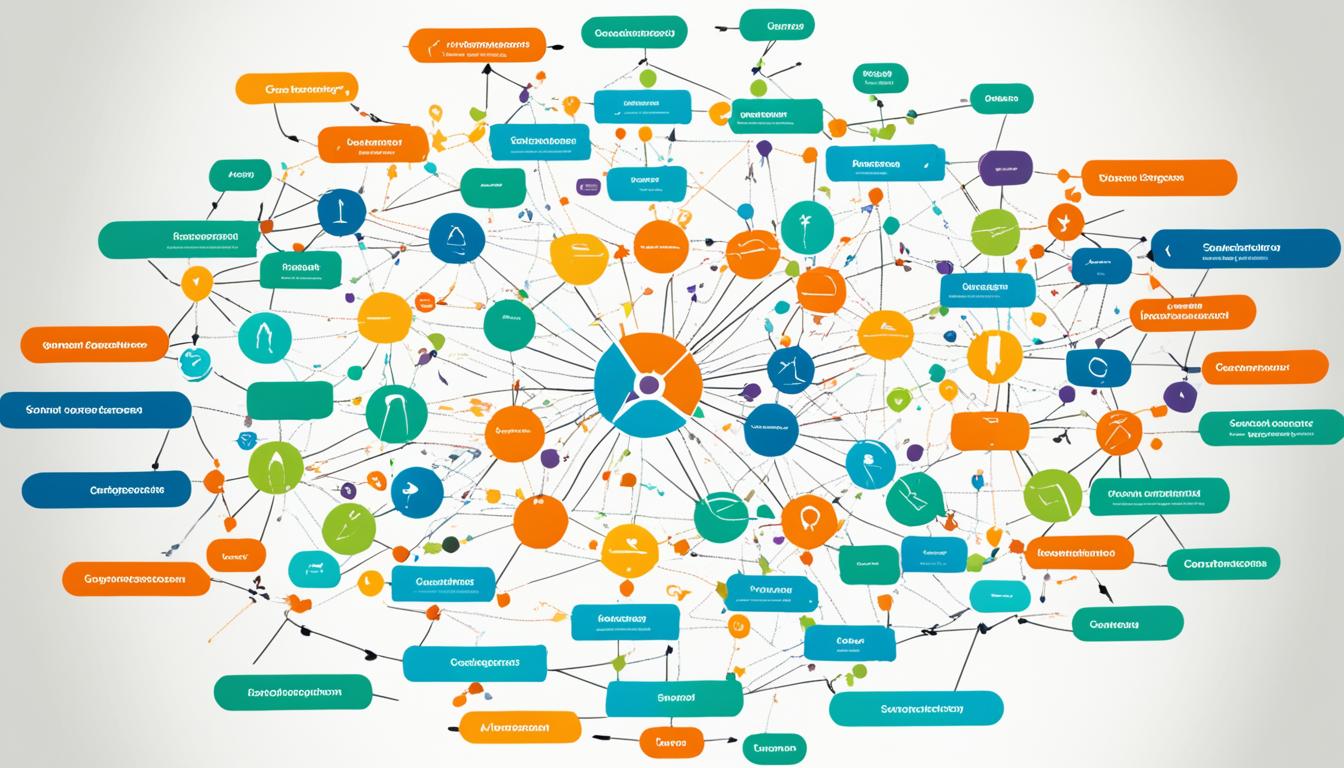A stakeholder engagement plan is a crucial document that outlines the key elements of an effective stakeholder engagement strategy. It includes information on the objectives of the engagement, the stakeholders involved, the activities planned, and how the engagement will be reported. Stakeholder engagement plans can also be referred to as stakeholder management plans or community engagement plans. These plans don’t have to be lengthy and complex; they can be concise and focused.
Creating a stakeholder engagement plan before engaging with stakeholders is essential to ensure success, alignment with project goals, and compliance. The plan provides direction, helps assign resources effectively, and guides the engagement process from start to finish.
Stakeholder engagement plans should be created early in the project timeline for maximum impact, but not too early that there is insufficient clarity on the objectives and stakeholders involved. It is important to ensure that the plan is used and regularly updated to track progress, evaluate engagement, and make necessary adjustments for continuous improvement.
Understanding the Importance of a Stakeholder Engagement Plan
A stakeholder engagement plan plays a crucial role in ensuring the success of a project. It enables the project team to engage the right stakeholders at the right time, with accurate information, and using effective strategies. Without a well-defined plan, stakeholder engagement can be less effective and may not align with best practices in stakeholder communication strategy, stakeholder relationship management, stakeholder involvement approach, and stakeholder participation techniques.
A stakeholder engagement plan facilitates collaboration and ensures that the project team is on the same page. It helps assign resources appropriately and follows a logical and strategic process throughout the engagement. By aligning the project or organization’s objectives with stakeholder engagement activities, the plan ensures effective communication and engagement with stakeholders. Utilizing stakeholder feedback becomes easier, resulting in better decision-making, anticipation of potential issues, and risk reduction.
“A well-defined stakeholder engagement plan helps tap into valuable information and resources to achieve project goals and objectives.”
By implementing an engagement plan, project teams can tap into valuable information and resources. This, in turn, leads to improved decision-making processes and the ability to anticipate potential issues. By reducing risks, organizations can enhance stakeholder trust and build long-term relationships with their stakeholders.
Overall, a stakeholder engagement plan is a crucial tool for successful project outcomes. It ensures that the right stakeholders are engaged in a timely and appropriate manner, facilitates effective communication, and aligns project objectives with the engagement activities. By utilizing stakeholder communication strategy, stakeholder relationship management, stakeholder involvement approach, and stakeholder participation techniques, organizations can enhance stakeholder engagement and achieve positive results.

Creating a comprehensive stakeholder engagement plan is essential for project success. It enables effective stakeholder communication strategy, stakeholder relationship management, stakeholder involvement approach, and stakeholder participation techniques. By following best practices, organizations can build strong stakeholder relationships, mitigate risks, and achieve positive project outcomes.
Key Elements of a Stakeholder Engagement Plan
A stakeholder engagement plan plays a critical role in ensuring the success of any project or organization’s engagement efforts. To develop an effective plan, there are several key elements that should be considered and incorporated. These elements include:
- Clear Objectives: The engagement plan should have specific, measurable, achievable, relevant, and time-bound (SMART) objectives that align with the overall project or organizational goals. These objectives provide clarity and direction for the engagement activities.
- Comprehensive Stakeholder List: It is essential to identify and include all individuals, groups, and organizations that have an impact on or are impacted by the project. By having a comprehensive stakeholder list, you can ensure that all relevant parties are considered and engaged.
- Stakeholder Analysis and Mapping: Conducting a thorough stakeholder analysis helps understand the characteristics, interests, and influence of each stakeholder. By mapping stakeholders, you can prioritize their engagement and tailor communication strategies accordingly.
- Planned Engagement Activities and Communication Methods: The engagement plan should outline the specific activities and methods that will be used to engage stakeholders. This can include a mix of traditional and digital approaches to accommodate different preferences and maximize participation.
- Responsible Team Members: Assigning roles and responsibilities to team members ensures that the engagement activities are well-coordinated and executed. Each team member should have clear accountability for their assigned tasks.
- Timelines: Establishing realistic timelines for the engagement activities helps in managing expectations and ensuring that the plan stays on track. Timelines provide a roadmap for the timely completion of the engagement process.
- Mechanisms for Reporting, Reflecting, and Adjusting: It is crucial to have mechanisms in place for regular reporting, reflection, and adjustment of the engagement activities. This allows for ongoing learning, evaluation, and improvement of the engagement process.
By incorporating these key elements into a stakeholder engagement plan, organizations can enhance their engagement efforts, ensure stakeholder satisfaction, and achieve project success. There are various templates, frameworks, and tools available that can assist in the creation and implementation of a stakeholder engagement plan.

Five Steps to Creating a Stakeholder Engagement Plan
Creating a stakeholder engagement plan can be made simpler by following a systematic five-step process. These steps are designed to ensure that the engagement is strategic, focused, and aligned with the objectives of the project. Let’s explore each step in detail:
Step 1: Define Objectives for the Engagement
The first step in creating a stakeholder engagement plan is to clearly define the objectives of the engagement. These objectives should be specific, measurable, achievable, relevant, and time-bound (SMART). By setting clear objectives, you can provide direction to the engagement activities and ensure that they align with the overall goals of the project. It’s important to consider what you want to achieve through stakeholder engagement and how it will contribute to the success of the project.
Step 2: Identify and Prioritize Stakeholders
Once the objectives are defined, the next step is to identify the stakeholders who are affected by or have an interest in the project. This involves creating a comprehensive stakeholder list that includes individuals, groups, and organizations. It’s important to consider both internal and external stakeholders. Once the stakeholders are identified, it’s crucial to prioritize them based on their impact and influence on the project. This will help determine the level of engagement required for each stakeholder group.
Step 3: Analyze and Map Stakeholders
After identifying stakeholders, the next step is to analyze and map them. This involves gathering information about their demographics, interests, level of impact, and level of influence. This analysis will help you understand the needs, motivations, and concerns of the stakeholders, enabling you to tailor engagement strategies accordingly. Stakeholder mapping can be done using various techniques, such as power-interest grids and influence-impact matrices.
Step 4: Plan Engagement Activities and Communication Methods
With a clear understanding of the stakeholders, their needs, and their level of influence, you can now plan specific engagement activities and communication methods. This includes determining the most effective channels of communication for each stakeholder group, considering their preferences and needs. It’s important to involve responsible team members who will be responsible for implementing the engagement activities and ensuring timely and effective communication. This plan should also include the timing of the activities and the information that needs to be shared with the stakeholders.
Step 5: Report, Reflect, and Adjust
The final step in creating a stakeholder engagement plan is to have mechanisms in place for reporting, reflecting, and adjusting the engagement activities. This involves regularly evaluating the engagement efforts, gathering feedback from stakeholders, and making necessary adjustments based on the insights gained. Reporting on the progress of the engagement activities and the outcomes achieved is crucial for transparency and accountability. Reflection and adjustment allow for continuous learning and improvement, ensuring that stakeholder engagement remains effective and meaningful throughout the project lifecycle.
Following these five steps will help you create a well-structured and effective stakeholder engagement plan. By aligning the engagement activities with the objectives of the project and considering the needs and interests of the stakeholders, you can build strong relationships and achieve positive outcomes.
Overview of the Five Steps
| Step | Description |
|---|---|
| Step 1 | Define objectives for the engagement |
| Step 2 | Identify and prioritize stakeholders |
| Step 3 | Analyze and map stakeholders |
| Step 4 | Plan engagement activities and communication methods |
| Step 5 | Report, reflect, and adjust |
The 10 Key Principles of Stakeholder Engagement
The 10 Key Principles of Stakeholder Engagement provide a framework for successful engagement. Developed by the Stakeholder Engagement Focus Group (SEFG) based on the RICS Guidance Note “Stakeholder Engagement” 1st edition, these principles emphasize the importance of various factors that contribute to effective stakeholder engagement:
- Early Engagement: Engaging stakeholders early in the project allows for their input and involvement from the start, increasing the chances of successful outcomes.
- Clear Objectives: Clearly defining the objectives of the engagement helps align stakeholder expectations and project goals.
- Inclusivity: Ensuring that all stakeholders with relevant interests and perspectives are included promotes fairness and reduces the risk of exclusion or bias.
- Transparency: Open and transparent communication with stakeholders builds trust and fosters a sense of accountability.
- Communication: Effective communication strategies enable stakeholders to understand the project’s purpose, progress, and impact, encouraging their active participation.
- Responsiveness: Being responsive to stakeholder concerns and feedback demonstrates a commitment to addressing their needs and interests.
- Collaboration: Collaboration with stakeholders allows for shared decision-making, leveraging their expertise and insights to achieve mutually beneficial outcomes.
- Learning: Continuous learning and improvement based on stakeholder feedback and lessons learned enhance the engagement process and project outcomes.
- Sustainability: Stakeholder engagement should be approached as an ongoing process, ensuring long-term relationships and sustained positive impacts.
“Following these principles helps ensure meaningful and productive stakeholder engagement, leading to better project outcomes and lasting stakeholder relationships. Stakeholder engagement should be seen as an ongoing process rather than a one-time event, and these principles serve as a guide for effective engagement throughout the project lifecycle.” – Stakeholder Engagement Focus Group (SEFG)
By adhering to these principles, organizations can create a solid foundation for stakeholder engagement and maximize its positive impact on projects and relationships.

Benefits of Using Stakeholder Engagement Software
Stakeholder engagement software plays a crucial role in supporting the successful implementation of a stakeholder engagement plan. By offering a centralized platform, the software enables organizations to efficiently organize and manage stakeholder information, conduct comprehensive stakeholder analysis and mapping, plan and track engagement activities, and generate detailed reports. With stakeholder engagement software, many manual tasks can be automated, ensuring data accuracy and accessibility. Additionally, the software facilitates collaboration among team members and streamlines the overall engagement process.
One of the key advantages of using stakeholder engagement software is its ability to enable effective two-way communication with stakeholders. Through the software’s features, organizations can engage in meaningful conversations, gather feedback, and address concerns in real time. This fosters transparency and strengthens stakeholder relationships, promoting a positive engagement experience.
Moreover, stakeholder engagement software allows for real-time tracking and monitoring of engagement progress. Organizations can monitor the effectiveness of their engagement activities, identify areas for improvement, and make data-driven decisions. The software also provides valuable insights that can be used to evaluate the success of engagement initiatives and optimize future strategies.
By utilizing stakeholder engagement software, organizations can save both time and resources. The automation of manual tasks reduces the administrative burden, allowing teams to focus on strategic planning and meaningful engagement. The software also enhances the quality of engagement by ensuring consistency in communication and documentation.
In conclusion, stakeholder engagement software is a valuable tool for organizations seeking to enhance their stakeholder engagement efforts. From streamlining processes to facilitating effective communication and generating valuable insights, the software enables organizations to create meaningful and productive stakeholder relationships. By leveraging the benefits of stakeholder engagement software, organizations can achieve positive project outcomes and sustainable success.
Conclusion
Creating and implementing a stakeholder engagement plan is essential for successful project outcomes and building strong stakeholder relationships. The plan should include clear objectives, comprehensive stakeholder analysis, planned engagement activities, responsible team members, timelines, mechanisms for reporting and adjustment, and adherence to the 10 Key Principles of Stakeholder Engagement. Regular evaluation, reflection, and adjustment are necessary for ongoing improvement.
Stakeholder engagement software can significantly support the implementation of the plan by providing a centralized platform for managing stakeholder information, automating tasks, and facilitating effective communication and collaboration. By following best practices and utilizing the right tools, organizations can enhance their stakeholder engagement efforts, mitigate risks, and achieve positive and sustainable project outcomes.
In conclusion, a well-executed stakeholder engagement plan ensures that stakeholders are involved at the right time, with the right information, and in the right way. By actively engaging stakeholders and leveraging stakeholder engagement software, organizations can foster meaningful relationships, gather valuable insights, and create a positive impact on their projects. Implementing a stakeholder engagement plan is an investment that pays off in the form of enhanced project outcomes, improved stakeholder satisfaction, and increased organizational success.
FAQ
What is a stakeholder engagement plan?
A stakeholder engagement plan is a document that outlines the key elements of an effective stakeholder engagement strategy, including objectives, stakeholders involved, planned activities, and reporting methods.
What should be included in a stakeholder engagement plan?
A stakeholder engagement plan should include clear objectives, a comprehensive stakeholder list, stakeholder analysis and mapping, planned engagement activities, responsible team members, timelines, and mechanisms for reporting and reflection.
What are the benefits of using stakeholder engagement software?
Stakeholder engagement software can support the implementation of a stakeholder engagement plan by providing a centralized platform for organizing stakeholder information, planning engagements, facilitating communication, and generating reports, saving time and enhancing engagement quality.
Why is a stakeholder engagement plan essential for project outcomes?
A stakeholder engagement plan ensures project objectives are aligned with engagement activities, mitigates risks, builds strong stakeholder relationships, and supports positive and sustainable project outcomes.




